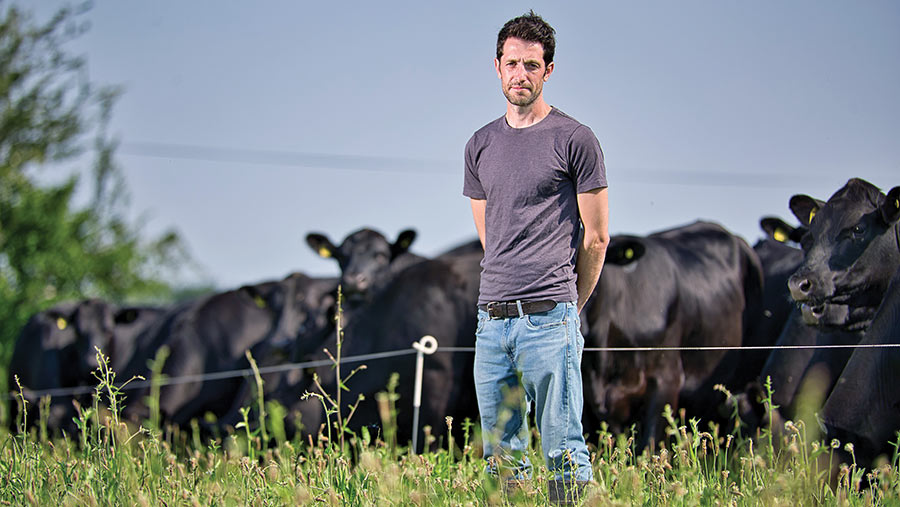How a beef farm is managing grassland to face extreme weather
 Ian Farrant © Richard Stanton
Ian Farrant © Richard Stanton Maize is an established part of Ian Farrant’s system at Underley Farm, Stoke Bliss in Worcestershire, and a crop he describes as a “brilliant insurance policy’’ in dry summers when grass growth is under pressure.
But very difficult harvesting conditions in October 2023 have forced a rethink for the winner of Farmer’s Weekly’s Beef Farmer of the Year 2023.
“We’d only managed to harvest half of the crop when we had three inches (75mm) of rain and lost precious topsoil. It went against everything we try to achieve in terms of doing our best for soil health and resilience,’’ says Ian.
See also: The benefits of growing and feeding lucerne to dairy cows
Farm facts: Underley Farm, Stoke Bliss, Worcestershire
- 650 dairy-cross calves bought and finished annually
- 202ha owned, 20ha rented
- Mid Tier Countryside Stewardship agreement
- Cattle sold to Dovecote Park and Grassroots Farming
- Two full-time and one part-time staff
Rainfall figures show that 600mm of rain fell on the farm between July and December 2023 – up from 375mm during the same period in 2022.
With high rainfall and long periods of hot, dry conditions presenting new challenges, Ian is making key changes.
He is scaling back the maize area from 40ha to 24ha (99 acres to 59 acres) and replacing it with other crops and grass leys, as he explains:
Growing lucerne
One of the questions we asked ourselves was: “What can we grow instead of maize to ensure that we still have enough feed in a hot and dry year?”
Lucerne is drought resistant and a high-protein feed, and it ticked those boxes.
Growing it is a first for us and there isn’t a lot of it grown in this area, so we are starting with only 4ha (10 acres). We don’t know if it will be compatible with our soils – which can be on the heavier side – but unless we have a go, we will never really know.
In an ideal world, we would direct-drill the seed with our own drill, however we have little choice but to plough and start again because of the damage to the ground from the maize harvesting.
Lucerne doesn’t have the energy level of maize, but we have switched to finishing Aberdeen Angus-crosses from British Blue-crosses, and they have less of a requirement for energy.
They are only fed a finishing ration for 45 days, compared with 75 days for the British Blue-crosses, so lucerne should be a good fit for the growing ration.
Introducing different species into herbal leys
We are introducing new species of grasses into our 23ha (57 acres) of multispecies leys, including AberRoot, a ryegrass crossed with festulolium that has three times the rooting depth of the standard ryegrass we grow.
We are also trialling 5ha (12 acres) of a new variety of drought-tolerant red clover that has the deep tap root of red clover but is as prolific as white clover.
The farm has really good soil depth, so we want to grow plants that capitalise on that.
Retaining some maize
We are right on the cusp of where it is sensible to grow maize, so we grow the early variety Rubiera, and probably harvest it earlier than we should because we are paranoid about the weather changing.
We are not giving up on maize entirely – it is such a good source of feed for us, and when our grass doesn’t grow, we will get a great maize crop, and vice versa.
We are trying to do what is right for the soil, but we also have to do what is right for the business.
The Farmers Weekly 2024 Beef Farmer of the Year
 Farmers Weekly 2024 Beef Farmer of the Year Award is sponsored by ABP.
Farmers Weekly 2024 Beef Farmer of the Year Award is sponsored by ABP.
Enter yourself or nominate someone now on our Awards website.
